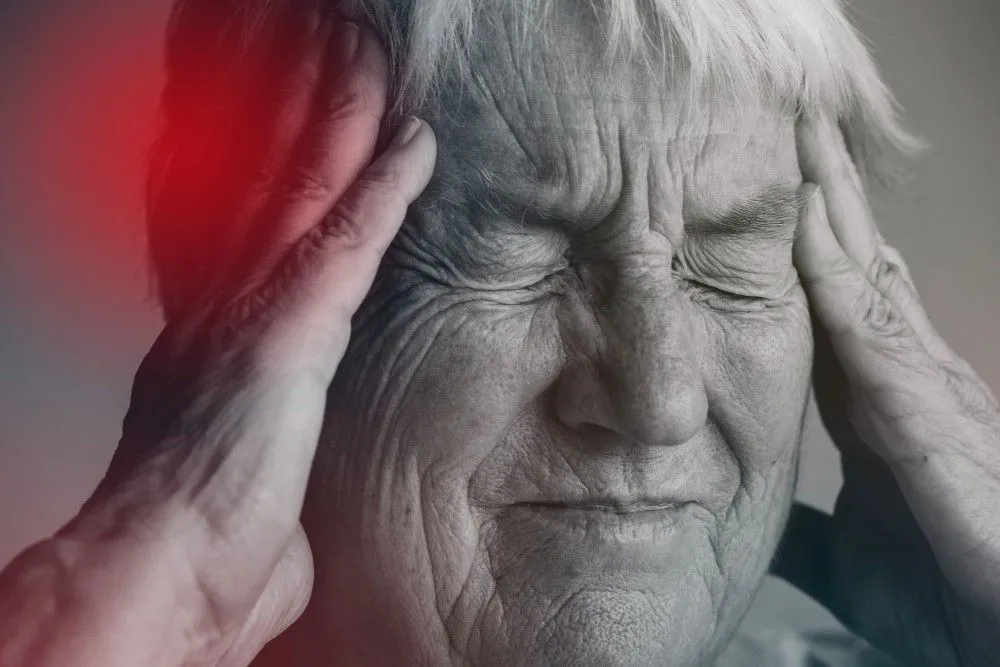Imagine waking up and noticing one side of your face suddenly droops, your eye won’t close, and your smile looks lopsided. Scary, right? You might think it's a stroke—but it could be Bell’s Palsy.
Both conditions affect your face. One is often harmless, while the other can be life-threatening. Knowing the difference between Bell's palsy vs stroke can save a life—maybe even your own.
In this guide, we’ll help you tell them apart—fast, simple, and life-saving.
Bell's Palsy vs Stroke: A Quick Comparison
Is It Bell’s Palsy or a Stroke? Here's the table breaking down the key differences between both conditions, so that you can act smart and fast:
|
Feature |
Bell’s Palsy |
Stroke |
|
Cause |
Facial nerve inflammation |
Blocked or ruptured blood vessels in the brain |
|
Facial Involvement |
Entire one side of the face |
Often lower face only (eyebrow is spared) |
|
Arm or Leg Weakness |
No |
Often present |
|
Speech Problems |
Rare |
Common |
|
Onset of symptoms |
Gradually, it develops over hours or overnight. |
Sudden (within seconds to minutes) |
|
Medical Emergency |
No, but requires medical evaluation |
Yes, immediate emergency services |
|
Recovery |
Full recovery in weeks to months |
Vary, which depends on speed of the treatment |
Understanding Bell’s Palsy and Stroke
Bell’s Palsy
- Bell's Palsy is marked as a temporary weakness or paralysis of facial muscle, making one side of the face droop.
- It most likely impacts one part of the face, but there is a possibility to affect the entire face.
- This condition causes difficulty in closing one eye or challenges smiling, or using the facial muscles.
- It can happen to any age group, but it is not life-threatening.
Stroke
- A stroke occurs when there is a sudden blockage of blood flow to the brain, damaging the brain tissue.
- This happens due to the rupture or clotting of the blood vessel that travels to the brain or is present in the brain.
- It is a medical emergency as the brain part stops receiving oxygen and vital nutrients, which can lead to permanent brain damage or even death.
Types of strokes :
- Ischemic Strokes: Blood clot blocks the blood vessels present in the brain.
- Hemorrhagic Stroke: Blood vessels rupture and start bleeding into the brain.
- Transient Ischemic Attack: Temporary interruption of blood flow to the brain, also called "mini-stroke".
- Cryptogenic Stroke: A type of stroke with no known cause.
- Brain Stem Stroke: Affects the brainstem, which is located at the brain's base.
Bell's Palsy vs Stroke: Symptom Comparison
Here’s the comparison table:
|
Symptoms |
Bell's Palsy Symptoms |
Stroke Symptoms |
|
Facial Weakness |
On one side of the face |
In other body parts like leg, face, or arms, especially on one side of the body. |
|
Eyebrow Movement |
Can't raise an eyebrow on the affected part |
Can raise an eyebrow |
|
Arm or Leg Weakness |
No |
Yes, generally on the same side as the facial weakness. |
|
Speech Difficulty |
Rare |
Slurred speech or challenges in speaking |
|
Drooling |
On the affected side |
May occur with facial weakness |
|
Tearing or Dry Eye |
Commonly occurs on the affected side |
Rare |
|
Balance/Coordination Issues |
No |
Possible, particularly with cerebellar stroke |
|
Taste Loss |
On the front of the tongue |
Rare |
|
Headache |
Rare |
Common, especially with hemorrhagic stroke |
FAST Test for Stroke Symptoms
According to the Centers for Disease Control and Prevention (CDC), use the F.A.S.T. acronym to identify the stroke:
- F –Face drooping
- A –Arm weakness
- S –Speech difficulty
- T –Time to call 911, an emergency service
If you or someone around you experiences these symptoms, act FAST as it can save lives.
Understanding the Potential Causes of Bell’s Palsy & Strokes
The causes of both conditions are very different. Knowing them can help understand the severity of these conditions:
Causes of Bell's Palsy
It occurs when the brain's 7th cranial nerve (that regulates facial muscles) gets damaged. The exact cause of nerve compression is uncertain, however, it may be associated with viral infections.
The following are the common viral infections:
- Shingles and chickenpox
- Genital herpes and cold sores
- Mumps (mumps virus)
- Mononucleosis infectious
- Illnesses related to the respiratory system
- Infections due to Cytomegalovirus
- Measles
- Flu
Causes of Stroke
Strokes are caused by a blood vessel within or leading up to the brain becoming clogged or ruptured. Each stroke has a different cause:
- Ischemic stroke: A narrowing or blockage in the blood arteries that significantly lowers the blood flow to the brain.
- Hemorrhagic stroke: A blood vessel in the brain bursts and leaks blood, which causes damage to the brain tissues.
Potential Risk Factors for Bell’s Palsy & Stroke
The table shows the shared risk factors for both conditions:
|
Risk Factor |
Bell’s Palsy |
Stroke |
|
Diabetes |
Yes |
Yes |
|
High blood pressure |
Yes |
Yes |
|
Obesity |
Yes |
Yes |
|
Respiratory infections |
Yes |
No |
|
Preeclampsia |
Yes |
Yes |
|
Physical inactivity |
No |
Yes |
|
Inadequate diet |
No |
Yes |
|
Pregnancy |
Yes |
Yes |
|
Smoking |
No |
Yes |
How Do the Doctors Diagnose Bell’s Palsy vs. Stroke?
The healthcare providers diagnose these conditions through physical exams, symptom assessment, and some diagnostic tests:
Physical Exam & Symptom Analysis:
Bell's Palsy:
- The doctors will examine the severity and extent of facial weakness, noticing if the forehead is also impacted.
- They will also ask about other symptoms such as trouble closing the eyes, pain behind the ear, and taste change.
- No imaging or laboratory tests are required to diagnose Bell’s palsy. But some tests will be needed to determine the other causes of facial paralysis.
Stroke:
The healthcare providers will check for facial weakness or paralysis along with signs like loss of balance, vision changes, or slurred speech. They will also order these tests to diagnose stroke:
- Brain scans like CT or MRI scans: CT scans show tissue damage and bleeding, while MRI scans detect subtle changes associated with ischemic and hemorrhagic strokes.
- Blood tests: Check out the types of stroke and detect other conditions that cause stroke.
- Echocardiogram: Reveals abnormalities such as blood clots, heart valve problems, or atrial fibrillation that can cause stroke.
- Carotid ultrasound: Check the narrowing and blockages in the carotid arteries that supply blood to the brain.
- Angiography: Detects blockages or other abnormalities that cause the stroke.
How Does Treatment Differ Between Bell’s Palsy & Stroke?
Both conditions need different treatments:
Treatment for Bell’s Palsy:
The treatment options for Bell’s palsy include:
- Corticosteroids: Like prednisone to reduce swelling and inflammation of the facial nerve.
- Antiviral medications: E.g., acyclovir or valacyclovir to speed up recovery.
- Eye Drops: Like artificial tears and ointments to prevent eye dryness and injury.
- Surgical tape: To keep the eye closed while sleeping.
- Other Therapies: Facial massage, physical therapy, or acupuncture to relieve pain and enhance facial nerve function.
- Surgery: In rare cases, decompression surgery is performed to prevent pressure on the facial nerve, and facial reanimation surgery is performed to restore facial symmetry and movement.
Treatment for Stroke:
The treatment involves the following options:
Medications
These medicines manage stress-related complications:
- Thrombolytic medication: Dissolves blood clots.
- Anticoagulant medication: Reduces the chances of further blood clots.
- Antiplatelet medications, like Aspirin, are used to reduce the risk of the formation of blood clots.
- Statins: Lower cholesterol.
- Blood pressure medicines: E.g., captopril, bisoprolol, or nifedipine to lower blood pressure levels.
Rehabilitation
This involves:
- Physical therapy: Helps regain lost movement, balance, and strength.
- Speech therapy: Supports regaining the ability to communicate and swallow.
- Occupational therapy: Assists in learning new approaches to perform daily activities.
Surgery
It includes:
- Thrombectomy: Involves inserting a device using a catheter into the blood vessel to remove the clots.
- Carotid endarterectomy: Includes making an incision in the neck to open the carotid artery and remove the plaque that is causing blockages.
- Craniotomy: Involves repairing damaged blood vessels and removing blood from the brain.
Recovery & Outlook for Bell’s Palsy and Stroke
The outlook will differ based on the severity of the condition and how early the treatment is received:
Bell’s Palsy
- Bell’s Palsy recovery period is within a few months to a year. However, some people may experience facial weakness or paralysis in the long term.
- Research says that 70%-80% of individuals with Bell’s Palsy recover fully without a need to get treatment, and about 95% will recover with medicines.
- It also states that this condition recurs in around 10% of cases within 10 years.
Stroke
-
It can take weeks, months, or even years to recover from a stroke. Some people might not completely recover and need rehabilitation therapy.
-
A study reports that stroke might reduce the life expectancy of an individual by 5-10 years, depending on the severity of the stroke and patient factors.
-
It was reported that the 5-year survival rate was around 49.4% for individuals with ischemic stroke and 37.8% for those with intracerebral hemorrhage.
Final Thoughts
This is how you can differentiate Bell’s Palsy vs stroke based on symptoms, causes, diagnosis, and treatment. Though both conditions cause facial weakness, the damages are very different. Bell’s Palsy is generally temporary and harmless, however, a stroke needs immediate medical attention. Identifying the key differences, particularly in muscle movement, limb strength, and speech can help you act quickly and save a life. When in doubt, see a doctor right away for medical help.
Frequently Asked Questions
Is Bell’s palsy permanent?
No, it's not permanent, and it will recover within weeks or months. However, in a few cases, it can persist longer with some facial paralysis or other issues.
Does Bell’s Palsy increase stroke risk?
Yes, it can, especially in ischemic stroke, within the initial few years of experiencing Bell's Palsy. However, there is no extreme increase in the risk of hemorrhagic stroke.
What kind of stroke causes facial droop?
Ischemic strokes, transient ischemic attacks, and hemorrhagic strokes can contribute to facial droop by disrupting blood flow to the brain, which damages the nerves that regulate facial muscles.
What can Bell’s Palsy be confused with?
This condition can be confused with strokes, brain tumors, Lyme disease, myasthenia gravis, and Melkersson-Rosenthal syndrome.
For how long will the face droop after a stroke?
It will last for some weeks and months, and be permanent in some cases, while some recover fully within a few months.
Are strokes hereditary?
Yes, they are hereditary which can make you prone to this condition as it runs in the family and can be affected by genetics.
Reviewed by







